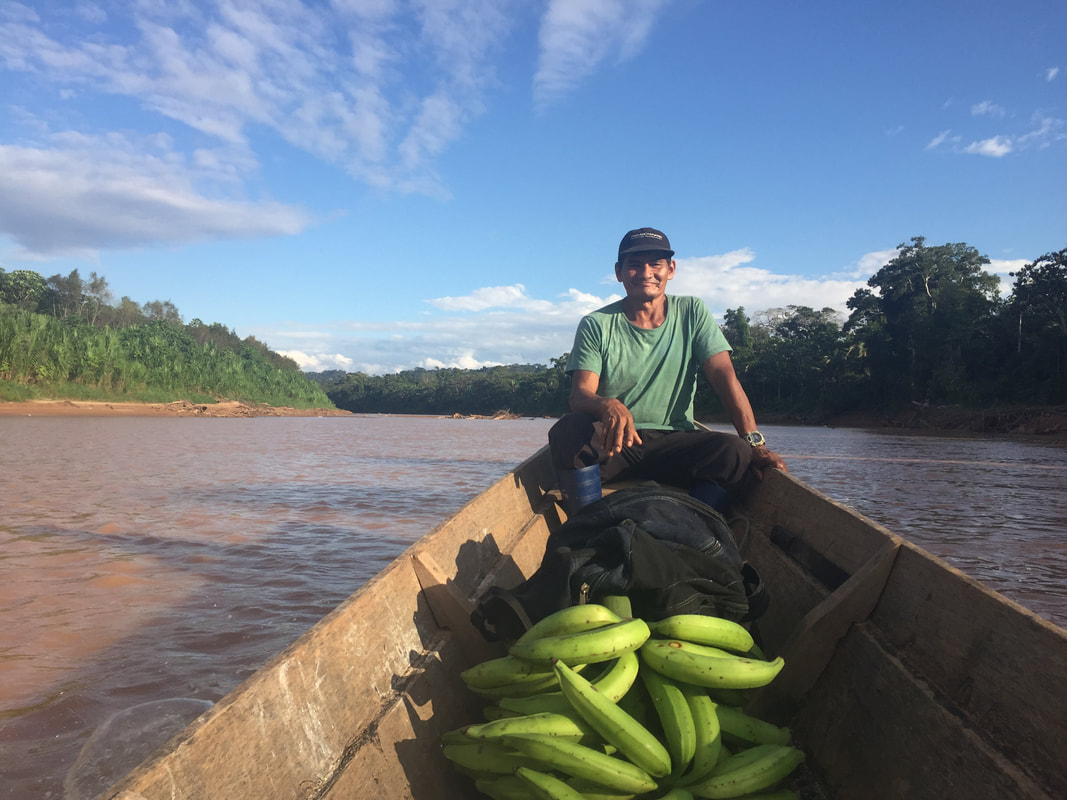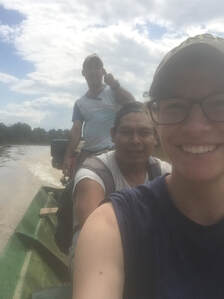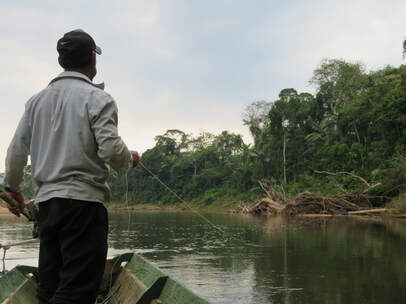|
There are a lot of stereotypes involved with wildlife research, such as muddy boots and binoculars, the ever-handy notebook, and a Jane Goodall-esque scene of being alone in the forest among the animals. Some of these are true: there is generally plenty of mud involved and the notebook is a must. But the romanticized idea of going to a far-off country, trekking through the wilderness alone, and sitting within reach of your study species? My experience in the field could not have been more different. Luckily, my collaborators at WCS Bolivia knew better than to let some crazy “choca” (a local term for a foreigner with light skin) loose in the jungle to look for animals.
This summer I was in the Bolivian Amazon, in and around the Madidi National Park, to collaborate in research on mammal population trends. Our field team operated in pairs: one researcher and one guide. The name “guide” is an oversimplification because otherwise we would have to call them “navigators/boat drivers/trail makers/trackers/carpenters/builders/translators/…” and you get the idea. These “guides” were all men hired from the local indigenous communities to help WCS researchers, and a crazy choca, study wildlife. When not working with WCS, they were fishermen, roofers, builders, loggers, and workers in any other role that was needed in the area. In addition to these skills, what made them invaluable to our team was their experience as trackers and hunters of local wildlife. They know the forest, they know how these animals behave, they know how to traverse a forest riddled with vines and cliffs, they know what time is best to bathe so you don’t get eaten by as many insects, they know which ants will give you fever from a single bite – they know it all! And me? Turns out I knew next to nothing about how to live and work in the Amazon. I left the US as a Yale graduate student and researcher; I arrived at the field site as lost woman with a notebook. I spent my first few weeks doing my best to follow my guide, Cayo, who I quickly (and very happily) learned has the patience of a saint. I was in charge of the GPS, a technology that he was not very familiar with, but other than that I was a glorified note-taker. Cayo told me what type of forest we were in, where the tracks were, what species they were from, and most of the other information. I wrote it all down in the datasheet and made sure we didn’t leave our assigned quadrant. I took my job as GPS navigator very seriously – especially since I had so few jobs. I learned an incredible amount from this taciturn man. In addition to his patience, he has a photographic memory of plants and tracks, an easy humor, a very unassuming way of showing me new things, and a ridiculously reliable mental map. Despite how contradictory the experience was to my expectations, Cayo and I had a wonderful time and did great work together. I got the data we needed, saw staggeringly beautiful wildlife, and made a good friend. This research, and any of the other research that WCS does in the park, would not have been possible without Cayo and the other guides (who were all remarkable, but we will save that for another time). They really are the unsung heroes of conservation research. So let’s sing a little.
840 Comments
|
Archives
November 2019
Categories
All
|



 RSS Feed
RSS Feed
